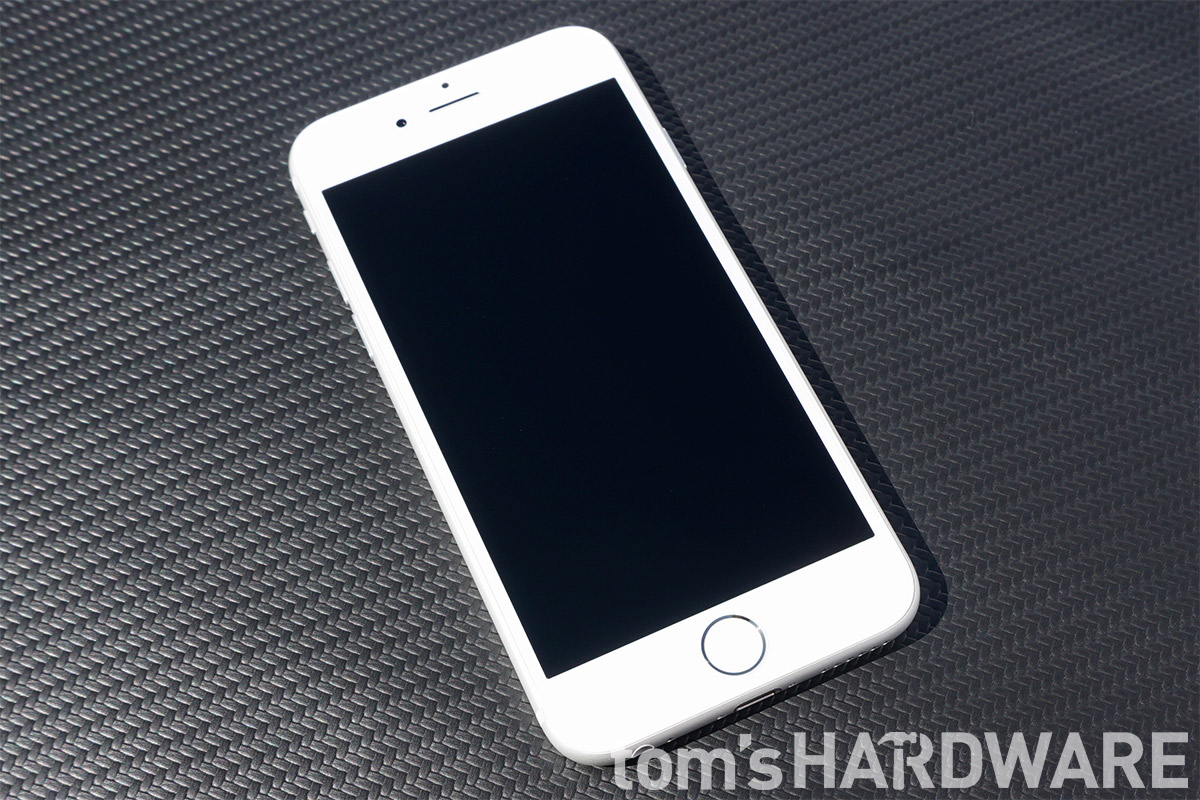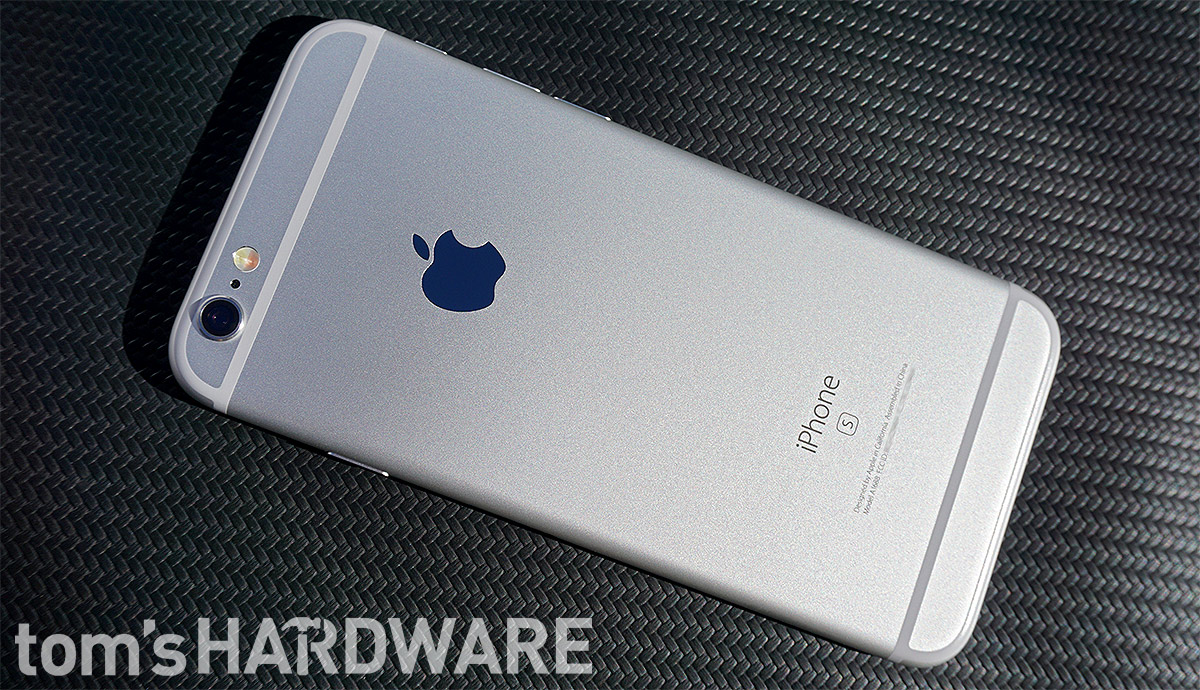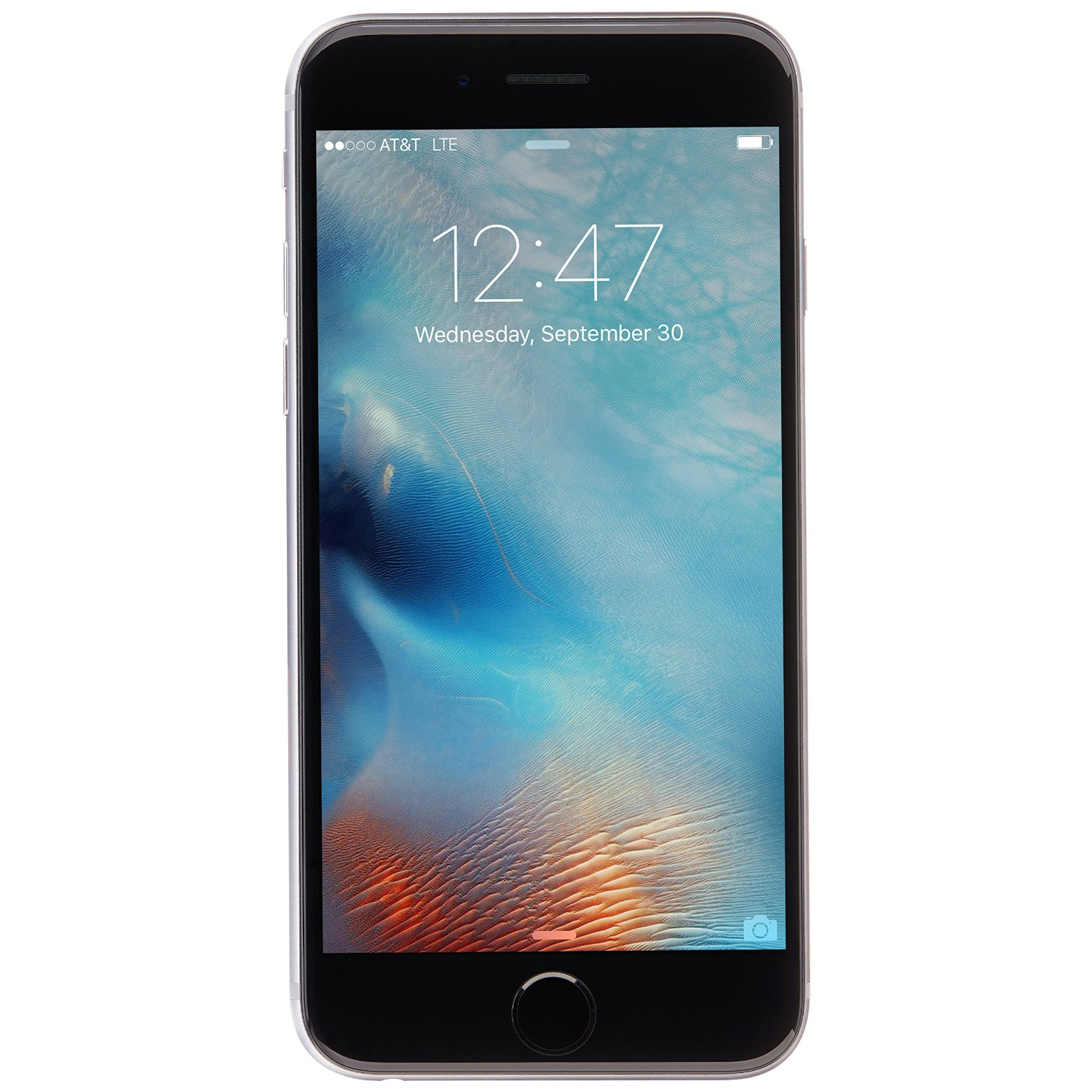Apple iPhone 6s And 6s Plus Review
The iPhone 6s and 6s Plus may look just like last year's iPhones, but hardware updates and Apple's new 3D Touch feature make them feel completely new. While the new cameras and 4K video recording may get the hype, it's the 2GB of RAM that steals the show.
Why you can trust Tom's Hardware
Hardware Design
To the naked eye, the iPhone 6s and 6s Plus look the same as their counterparts from last year, but there are a few subtle differences. In response to the overblown Bendgate scandal, where some iPhones bent under extreme conditions, Apple has upgraded the aluminum alloy used for the frame from a 2000 series to a 7000 series alloy. Without knowing the temper of the alloys used it's impossible to say exactly how much stronger the new frame is, but it's a safe bet that the iPhone is less prone to bending now.
Both new iPhones are also imperceptibly larger in height, width, and thickness than last year's models. Weight also increases by 14 grams (11 percent) for the iPhone 6s and by 20 grams (12 percent) for the 6s Plus. While the weight gain for the 6s goes unnoticed, the extra weight on the 6s Plus can be felt and makes an already hefty phone even heavier. What's driving these changes is the new Taptic Engine that provides the impulses for 3D Touch. In order to deliver greater force impulses in quicker succession, the Taptic Engine uses larger and heavier electromagnets than the traditional vibration motor it replaces.
The most noticeable design change is the addition of a new color. In addition to the now familiar Silver, Gold, and Space Gray options, Apple now offers Rose Gold, which is just a fancy way of saying pink. Similar to the Gold finish, Rose Gold is a subtle shade that looks classy. The Space Gray finish comes with a black front, while the other three options have white fronts.
Note: Since the iPhone 6s and 6s Plus look the same externally, apart from size obviously, the description below applies equally to both.
The entire front of the iPhone 6s is covered by a single piece of glass made by "a special dual ion‑exchange process" that makes it more durable. The edges of the glass are curved and seamlessly flow into the rounded sides, which makes edge swipes, an important UI interaction in iOS, feel natural and smooth.
The bezels surrounding the 4.7-inch screen on the 6s or 5.5-inch screen on the 6s Plus are uncharacteristically large for a modern flagship phone. The 6s Plus, for example, has the worst screen-to-body ratio of its peers at 67.9 percent versus 76.6 percent for Samsung's Galaxy S6 edge+ at the other end of the scale. The circular home button, with integrated Touch ID fingerprint scanner, is responsible for the large lower bezel. Given the convenience of Touch ID as an authentication mechanism, which receives a new second-generation capacitive touch sensor that makes it faster and even more accurate, this design "sin" is forgivable. The large upper bezel exists primarily for symmetry, however.
Centered above the screen is a recessed earpiece and ambient light sensor, with the FaceTime HD camera sitting to its left. The LCD interface circuitry hides behind the portion of the upper bezel between the screen and earpiece.
Get Tom's Hardware's best news and in-depth reviews, straight to your inbox.
The rounded sides and curved corners make the iPhone 6s very comfortable to hold. Combining smooth contours with aluminum and glass creates a slippery device, though, making a grippy case a good idea for less sure-handed individuals.
The power button is located near the top on the right side, with the the metal door for the Nano-SIM tray just below. Across from the power button are the volume controls. All of the buttons are metal and make a reassuring click when pressed. They also fit firmly in their sockets without any extra movement or rattle, exemplifying the iPhone's excellent build quality. The only complaint I have is that it's too easy to accidentally press the power button when changing the volume. Offsetting the buttons on either side just a little bit would help alleviate this minor complaint.
Above the separate volume buttons on the left side is a mute switch to silence the phone and place it into a vibrate-only mode. Having a physical switch is convenient, but because it protrudes slightly, it's too easy to accidentally activate when putting the phone into or taking it out of a pocket. This happened to me about once a day on average.
There's nothing to see on top since all of the ports are lined up on the bottom edge. Flanking the port for Apple's proprietary Lightning connector, which is reversible like USB Type-C, is the 3.5mm headphone jack, microphone, and mono speaker.
No iPhone would be complete without a reflective Apple logo on the back. Below the iPhone branding is a small "s" moniker, which is the only visible difference between an iPhone 6 and a 6s (well, except for the new Rose Gold color). Plastic antennae lines, a necessary evil for metallic phones, surround matching aluminum inserts on the upper and lower sections of the back.
The iSight camera, which protrudes a little less than one millimeter above the back surface, is protected by a sapphire lens and a metal ring. At least on the iPhone 6, this ring is made from a relatively soft metal and can get pretty chewed up over time if its owner is not careful. The circular True Tone Flash sits to the right of the camera, along with a second microphone for noise cancellation.
The smaller iPhone 6s hits a sweet spot for screen space and one-handed usability; any larger and it becomes difficult to reach the top of the screen. Both edges are within easy reach for edge-swipe gestures and it slips into nearly any pocket. It's a good choice for people with smaller hands or who prefer portability over screen area.
The iPhone 6s Plus, however, is a beast. Because of the larger bezels, it's big, even for a 5.5-inch device. Features like Reachability, swipe gestures, and, of course, Siri make one-handed navigation possible, but most of the time you should remain seated with both hands firmly gripping the phone. The most frustrating thing I've encountered when trying to use the 6s Plus with one hand is that my thumb cannot reach the opposite screen edge without shifting my grip, which causes the screen to flip to landscape view, thwarting my intended swipe gesture. While bigger phones like the 6s Plus present usability challenges, the utility of their larger screens can more than make up for these minor annoyances.
-
Shankovich I know lots of people are going to trash talk Apple here, but most of us know our hardware and thus should know a bit better. 2 gigs of ram seems low, but Apple's software is highly optimized and we know you can have a bunch of stuff open without it being that noticeable.Reply
Secondly, unless your eye ball touches the screen, you're not going to see a difference between a 1080p screen and above at typical viewing distances for a phone. (If you're going to complain about gaming on it, this site isn't for you). "So why don't they just put a higher res screen on it for the marketing aspect?" Well, aside from them being Apple, which is enough for most people, a higher res screen that most will barely be able to tell from FHD also means more work for the GPU, which means less battery life.
LG, Samsung, etc all do the same thing year over year, that being incremental upgrades, like Apple does. They're all the same. We've reached a saturation point in mobile devices now (probably did 2 years ago). -
10tacle What year is this? Why are we still seeing "new" so-called high end phones with 1080p 5.5" displays and 16GB base memory offerings? And for anyone who says that you can't really see the difference between 1080p and 1440p on such a small screen, get your eyes checked. Happy Samsung Note 5 owner here, upgrading from an 1136p, 326ppi iPhone 5S. (The Galaxy 6 and Note 5 are 1440p with 518ppi for anyone who cares).Reply -
monsta ummmmm don't you think you are just a bit late reviewing this phone that was released months ago ? LOLReply -
iam2thecrowe Seems ok if price isn't an object, most plans include the cost of the phone in a monthly payment now anyway. I will be getting one for work later this year, just hopefully battery life is much better than the 5s which is my current work phone. I wouldn't get one if I had to pay for it out of my own pocket though.Reply -
razor512 While I don't like the iphone, more companies need to follow their lead with the SOC. Instead of focusing on 8 slower cores (of which 4-6 of then remain idle most of the time since many tasks are not multithreaded. Focus on improving the IPC of the CPU and run newer but faster cores.Reply -
Astone3145 "QHD is only really necessary for AMOLED panels (due to having fewer red and blue subpixels than RGB stripe LCD panels), virtual reality applications (because the screen is closer to your eyes), and for people who augmented their genetic code with eagle DNA."Reply
I would love to have access to some of that augmented eagle DNA! -
MobileEditor ReplyI would love to have access to some of that augmented eagle DNA!
Do you struggle to see faraway objects? Find yourself squinting to read small text on your smartphone? Thanks to a breakthrough in genetic engineering, you can permanently upgrade your vision by augmenting your own blueprint with eagle DNA!
* See up to five times farther
* Experience more vivid colors
* See UV light
These are just a few of the advantages that await you after only a single, semi-painless treatment.
This treatment is not approved by the FDA. Some people may experience side effects, including upset stomach, loss of bone mass, accelerated growth of toenails, hardening of the lips, and nose bleeds. Please contact your doctor immediately if you feel the urge to jump from tall structures and soar above the trees, as this could indicate a potentially fatal condition. -
none12345 When your hardware is so far behind the competition its easy to make 70% gains lol. On one hand it's nice to see apple finally putting a little more hardware in their pones; on the other hand, flash is very cheap these days, and only 16 gigs is just downright laughable. The fact that put in like $5-15 more of ram and charge you $100-$300 is just a joke.Reply
And ya at minimum i would expect a 1080p screen, but really 1440p woudl be better. I dont know if phones need 4k in 5-6" just yet, at some point, sure. If you look at all the vr phone boxes coming out lately, you will absolutely notice a huge difference in screen res at a few inches from your eyes. Even 8k is not sufficient for that purpose.
In short tho, too little, too late, no thanks.








